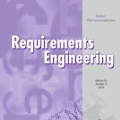Background: The detection and extraction of causality from natural language sentences have shown great potential in various fields of application. The field of requirements engineering is eligible for multiple reasons: (1) requirements artifacts are primarily written in natural language, (2) causal sentences convey essential context about the subject of requirements, and (3) extracted and formalized causality relations are usable for a (semi-)automatic translation into further artifacts, such as test cases. Objective: We aim at understanding the value of interactive causality extraction based on syntactic criteria for the context of requirements engineering. Method: We developed a prototype of a system for automatic causality extraction and evaluate it by applying it to a set of publicly available requirements artifacts, determining whether the automatic extraction reduces the manual effort of requirements formalization. Result: During the evaluation we analyzed 4457 natural language sentences from 18 requirements documents, 558 of which were causal (12.52%). The best evaluation of a requirements document provided an automatic extraction of 48.57% cause-effect graphs on average, which demonstrates the feasibility of the approach. Limitation: The feasibility of the approach has been proven in theory but lacks exploration of being scaled up for practical use. Evaluating the applicability of the automatic causality extraction for a requirements engineer is left for future research. Conclusion: A syntactic approach for causality extraction is viable for the context of requirements engineering and can aid a pipeline towards an automatic generation of further artifacts from requirements artifacts.
翻译:暂无翻译





